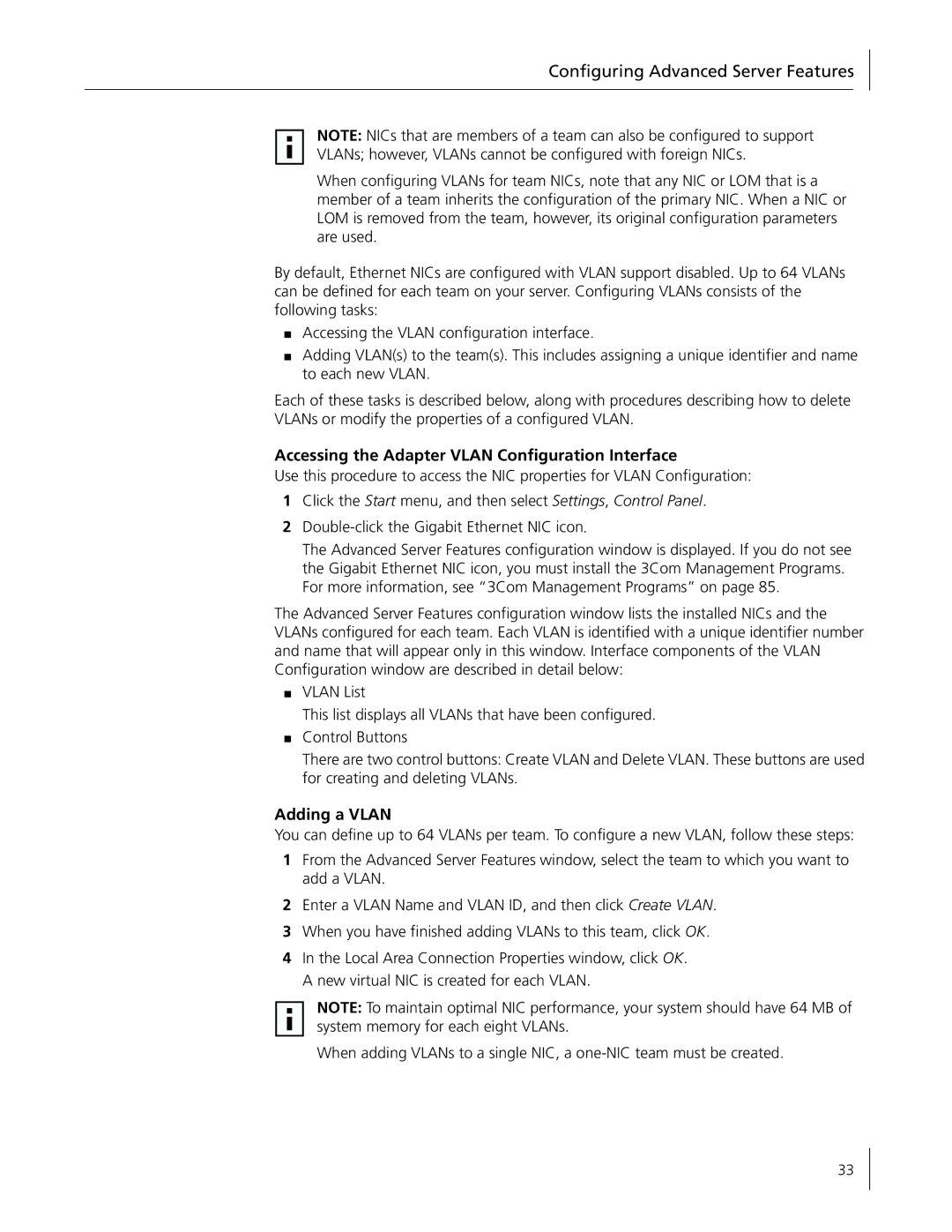
Configuring Advanced Server Features
NOTE: NICs that are members of a team can also be configured to support VLANs; however, VLANs cannot be configured with foreign NICs.
When configuring VLANs for team NICs, note that any NIC or LOM that is a member of a team inherits the configuration of the primary NIC. When a NIC or LOM is removed from the team, however, its original configuration parameters are used.
By default, Ethernet NICs are configured with VLAN support disabled. Up to 64 VLANs can be defined for each team on your server. Configuring VLANs consists of the following tasks:
■Accessing the VLAN configuration interface.
■Adding VLAN(s) to the team(s). This includes assigning a unique identifier and name to each new VLAN.
Each of these tasks is described below, along with procedures describing how to delete VLANs or modify the properties of a configured VLAN.
Accessing the Adapter VLAN Configuration Interface
Use this procedure to access the NIC properties for VLAN Configuration:
1Click the Start menu, and then select Settings, Control Panel.
2
The Advanced Server Features configuration window is displayed. If you do not see the Gigabit Ethernet NIC icon, you must install the 3Com Management Programs. For more information, see “3Com Management Programs” on page 85.
The Advanced Server Features configuration window lists the installed NICs and the VLANs configured for each team. Each VLAN is identified with a unique identifier number and name that will appear only in this window. Interface components of the VLAN Configuration window are described in detail below:
■VLAN List
This list displays all VLANs that have been configured.
■Control Buttons
There are two control buttons: Create VLAN and Delete VLAN. These buttons are used for creating and deleting VLANs.
Adding a VLAN
You can define up to 64 VLANs per team. To configure a new VLAN, follow these steps:
1From the Advanced Server Features window, select the team to which you want to add a VLAN.
2Enter a VLAN Name and VLAN ID, and then click Create VLAN.
3When you have finished adding VLANs to this team, click OK.
4In the Local Area Connection Properties window, click OK. A new virtual NIC is created for each VLAN.
NOTE: To maintain optimal NIC performance, your system should have 64 MB of system memory for each eight VLANs.
When adding VLANs to a single NIC, a
33
